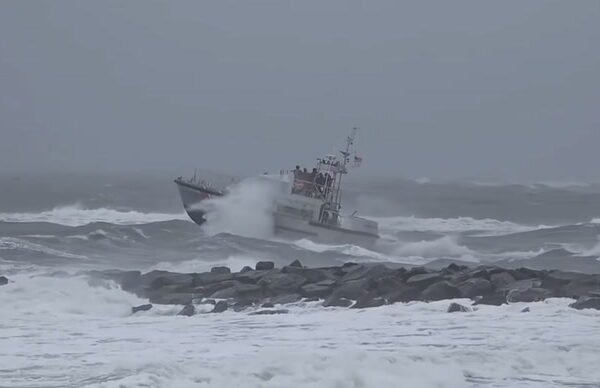Winter storms can turn a peaceful day into a chaotic one, and the Severe Weather Advisory for February 7, 2025, issued by AccuWeather, warns of just that. A series of relentless winter storms is expected to sweep across more than 20 states, bringing heavy snow, ice, and hazardous travel conditions. As someone who’s weathered a few blizzards myself, I know the sinking feeling of watching snow pile up outside while wondering if the power will hold. This article dives into the details of the advisory, offering practical insights, preparation tips, and everything you need to stay safe and informed.
What the Advisory Means for You
The February 7, 2025, advisory from AccuWeather signals a “February frenzy” of winter storms, with three major systems expected to hit within a week. These storms will affect regions from the northern Plains to the Northeast, bringing plowable snow, icy roads, and potential power outages. For families and businesses, this means preparing now to avoid being caught off guard.
Why This Storm Season Stands Out
AccuWeather’s long-range experts predicted in September 2024 that February 2025 would be exceptionally stormy, especially in the Northeast. This forecast, now unfolding, highlights a coast-to-coast storm track impacting millions with daily disruptions like school closures and flight delays. The storms’ intensity stems from a strong jet stream pattern, amplified by a La Niña event in the Pacific.
The Scope of the February 7 Storm
The first storm, hitting from Friday night through Sunday, will bring 3–6 inches of snow from Minneapolis to Boston, with some areas seeing up to 18 inches. Icy conditions are expected in northern Ohio and northeastern Pennsylvania, where ice buildup could exceed a quarter inch. As a kid in upstate New York, I remember sliding down an icy driveway during a storm like this—it’s no joke when roads turn into skating rinks.
Snowfall Expectations by Region
| Region | Expected Snowfall | Potential Impacts |
|---|---|---|
| Northern Plains | 3–6 inches | Hazardous travel, school delays |
| Great Lakes | 4–8 inches | Reduced visibility, flight disruptions |
| Northeast (Boston, NYC) | 4–8 inches | Power outages, icy roads |
| Interior New York | Up to 18 inches | Major disruptions, potential road closures |
Ice and Its Hidden Dangers
Ice accumulation, even as little as a quarter inch, can wreak havoc. It weighs down power lines, snaps tree limbs, and makes roads treacherous. AccuWeather’s Dan DePodwin warns that slight temperature changes can drastically alter impacts, so don’t assume your area is safe just because the last storm spared you.
The Week Ahead: More Storms on the Horizon
Two additional storms are forecast for the following week, with the Monday storm potentially bringing the heaviest snowfall yet to the Northeast and mid-Atlantic. This could be the best chance for significant snow in cities like Washington, D.C., and New York City, where warmer temperatures have limited snow so far this winter. Another storm later in the week may shift north, increasing rain risks in the mid-Atlantic but still dumping snow in New England.
Cumulative Snowfall Risks
AccuWeather predicts cumulative snowfall of 2–3 feet in areas like Binghamton, Syracuse, and Montpelier by late February. Boston could see similar totals, rivaling its biggest snowstorms in recent years. If you’re in these areas, stock up on essentials now—last winter, my neighbor ran out of salt mid-storm and had to borrow a bucket from me!
Preparing for the Storms: Practical Tips
Preparation is key to safely weathering these storms. Here’s how to get ready:
- Stock Up Early: Buy non-perishable food, water, batteries, and blankets. Don’t wait until the last minute when stores are packed.
- Winterize Your Home: Insulate pipes, seal windows, and check your heating system. A friend once had a pipe burst during a freeze, and the repair costs were brutal.
- Prepare Your Vehicle: Keep an emergency kit with blankets, food, and a shovel. Ensure tires are winter-ready and the gas tank is full.
- Stay Informed: Download weather apps like AccuWeather or NOAA Weather Radio for real-time updates.
Best Tools for Storm Preparedness
| Tool/App | Features | Where to Get |
|---|---|---|
| AccuWeather App | Real-time alerts, radar maps | App Store, Google Play |
| NOAA Weather Radio | 24/7 weather updates, emergency alerts | Amazon, Best Buy |
| Emergency Kit (Red Cross) | Food, water, first aid for 72 hours | Redcross.org, Walmart |
Pros and Cons of Winter Storm Preparedness
Pros:
- Peace of mind knowing you’re ready for disruptions.
- Reduced risk of injury or property damage.
- Ability to help neighbors or community members.
Cons:
- Upfront costs for supplies and home winterization.
- Time investment in planning and preparation.
- Potential for over-preparation if storms are less severe.
The Science Behind the Storms
The La Niña event in the Pacific is a major driver of this stormy pattern. La Niña cools ocean waters, shifting the jet stream to bring colder air and storms to the northern U.S. while keeping the south warmer and drier. This creates a stark contrast, with the Northwest and Northeast seeing heavy snow while southern states may dodge the worst.
How La Niña Shapes February’s Weather
AccuWeather and Severe Weather Europe note that La Niña’s influence strengthens in February, with a high-pressure system in the North Pacific and a low-pressure zone over Canada. This setup funnels cold air into the U.S., increasing snowfall in the Northwest, Midwest, and Northeast. The data aligns with historical La Niña winters, which often bring above-average snow to these regions.
Impacts on Daily Life and Economy
These storms will disrupt daily life, from slippery commutes to school cancellations. Businesses may face supply chain delays, and airports in the Midwest and Northeast could see significant flight disruptions. On the flip side, the snow and rain will help alleviate drought conditions in the mid-Atlantic and Southeast, reducing wildfire risks in areas like Southern California.
Economic Considerations
AccuWeather estimates that January 2025 wildfires in Southern California caused $250–$275 billion in damage. While February’s storms may add to economic strain through disruptions, they also bring benefits like improved water reserves. California’s reservoirs are currently above historical averages, a silver lining for summer water supplies.
Comparison: February 2025 vs. Historical Storms
How does this February compare to past winters? In 2015, Boston saw over 100 inches of snow, a benchmark for extreme winters. While 2025’s cumulative snowfall may not reach that level, the rapid succession of storms makes it uniquely challenging. Unlike 2015, when storms were more spread out, this year’s “frenzy” compresses impacts into a short period.
Key Differences
| Factor | February 2025 | February 2015 |
|---|---|---|
| Storm Frequency | 3–4 storms in one week | 2–3 major storms over a month |
| Snowfall Totals | 2–3 feet in some areas | Up to 8 feet in Boston |
| Geographic Scope | Coast-to-coast impacts | Northeast-focused |
| La Niña Influence | Strong, driving cold air south | Moderate, less pronounced |
People Also Ask (PAA)
What is a severe weather advisory?
A severe weather advisory, like the one issued for February 7, 2025, is a warning from meteorologists about hazardous weather conditions that could disrupt daily life. It includes details on expected snow, ice, or wind and advises preparation. AccuWeather’s advisory highlights risks like power outages and icy roads.
How can I prepare for a winter storm?
Stock up on essentials like food, water, and batteries, winterize your home, and keep an emergency kit in your car. Stay updated with apps like AccuWeather or NOAA Weather Radio. Check Ready.gov for detailed preparedness guides.
Where can I get real-time weather updates?
Download apps like AccuWeather or NOAA Weather Radio, available on the App Store or Google Play. You can also follow the National Weather Service on X or visit weather.gov for live radar and alerts.
What are the dangers of ice accumulation?
Ice buildup, even a quarter inch, can cause power lines to sag, trees to fall, and roads to become impassable. AccuWeather notes that slight temperature changes can amplify these risks, making preparation critical.
FAQ Section
Q: How much snow is expected in Boston on February 7, 2025?
A: Boston is forecast to receive 4–8 inches of snow from the February 7–9 storm, with the potential to rival the season’s biggest snowfall so far. Cumulative totals could reach 2–3 feet by late February.
Q: What should I include in a winter storm emergency kit?
A: Your kit should have non-perishable food, water, blankets, a flashlight, batteries, a first-aid kit, and a shovel. The Red Cross offers pre-made kits at redcross.org.
Q: Are there benefits to these winter storms?
A: Yes, the snow and rain can reduce drought conditions in the mid-Atlantic and Southeast, improving water reserves. California’s reservoirs are already above average, aiding summer water supplies.
Q: How does La Niña affect winter weather?
A: La Niña cools Pacific waters, shifting the jet stream to bring colder, stormier weather to the northern U.S. and drier conditions to the south. This is driving February 2025’s heavy snow in the Northwest and Northeast.
Q: Where can I find severe weather preparedness resources?
A: Visit Ready.gov for toolkits on winter storms, floods, and more. The National Weather Service (weather.gov) and AccuWeather (accuweather.com) also offer detailed guides and alerts.
Staying Safe and Informed
The February 7, 2025, Severe Weather Advisory underscores the importance of preparation in the face of relentless winter storms. Whether you’re in Boston bracing for heavy snow or in Ohio watching for ice, taking action now can make all the difference. My own experience digging out after a blizzard taught me that a little planning goes a long way—stock your pantry, charge your devices, and keep an eye on the forecast. For real-time updates, check AccuWeather.com or weather.gov, and consider downloading their apps. Stay safe, stay warm, and let’s weather this February frenzy together.






